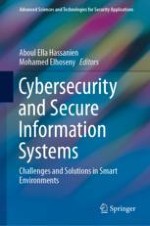2019 | OriginalPaper | Buchkapitel
A Detailed Investigation and Analysis of Deep Learning Architectures and Visualization Techniques for Malware Family Identification
verfasst von : S. Akarsh, Prabaharan Poornachandran, Vijay Krishna Menon, K. P. Soman
Erschienen in: Cybersecurity and Secure Information Systems
Aktivieren Sie unsere intelligente Suche, um passende Fachinhalte oder Patente zu finden.
Wählen Sie Textabschnitte aus um mit Künstlicher Intelligenz passenden Patente zu finden. powered by
Markieren Sie Textabschnitte, um KI-gestützt weitere passende Inhalte zu finden. powered by
